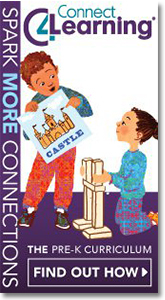ExchangeEveryDay Past Issues
 << Previous Issue
| View Past Issues | | Next Issue >>
<< Previous Issue
| View Past Issues | | Next Issue >> -Martin Luther King Jr., Minister and Civil Rights Activist
“Don’t get me wrong. I love my family. But at our family reunion in San Francisco, with spouses and children, after three days, we were all ready to kill each other (or at least kill my brother-in-law Murray). We had done everything together. We went to the museum in a group, ate together, relaxed in a group, argued in a group. We were like some weird middle age gang.
-Bernie, reliving a common childhood experience.”
Jim Greenman, writing in his classic book, Caring Spaces, Learning Places: Children’s Environments that Work (recently revised by Mike Lindstrom), relayed this story to illustrate the need every human being has for time away from a group. Young children are no exception. Here’s how he described this need:
“Children’s settings are social settings. A major appeal of the preschool/nursery school movement was the opportunity for young children to leave the home for structured group social experiences with other children. Companionship with other children mitigates the child’s intense intellectual and emotional ego-centrism when the child is forced to accommodate to other perspectives and purposes…Good design in early childhood settings reflects the need for a congenial, active social environment where positive social relationships are fostered…
No less necessary is providing for those play experiences that require seclusion - ‘places where a child can play privately or in a more deliberate, intimate way.’ Reading a book, trading treasures with a best friend, or concentrating on a difficult task such as playing with a stacking toy if you are 18-months, or a model if you are eight, requires some seclusion. Away from the action and flow, off the beaten path, a preschool child can construct and sustain an imaginary world – a manageable world where he or she is at the center, working through the bewildering issues of growing up.”
25% off this title for a limited time |






Post a Comment